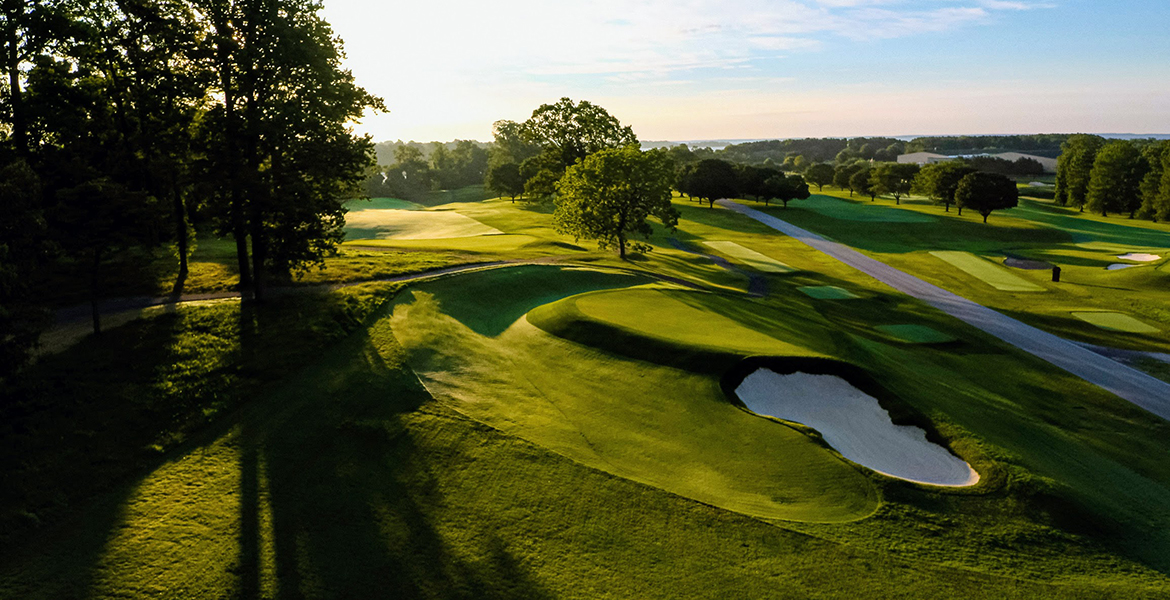When one thinks of golf course features, chances are that fearsome bunkers, lurking water hazards, and unique green complexes come to mind first.
But sometimes a golf facility has a manmade landmark that’s instantly recognizable, eminently memorable, and—for many golfers—obligatorily Instagram-able.
Outside the U.S., there may be no better example than the Swilcan Bridge at St. Andrews Links in Scotland. The small stone bridge over the Swilcan Burn is a must-stop picture spot for many golfers as they stroll up the 18th hole at “The Home of Golf.”
In the U.S., there are a host of well-known golf landmarks that provide a lasting memory of a special round, even if there may have been more forgettable shots than memorable ones. Here are five of my favorites.
Bandon Trails (Bandon, Ore.)—The Shorty Dow Plaque
The newest course debuting in 2024 at Bandon Dunes Golf Resort on the Oregon coast is a 19-hole par-3 layout named “Shorty’s,” in honor of the late Shorty Dow, the former caretaker of the property the pioneering resort calls home. And behind the back tee box on the 14th hole at Bandon Trails, high atop a ridge overlooking shore pines and grassy sand dunes along the Pacific Ocean, is a special plaque that’s long paid tribute to Dow and his wife Charlotte. The location is where Shorty took the course’s founder, Mike Keiser, when he first visited the land in the early 1990s. Part of the wording on the plaque, highlighted prominently, reads, “Here at the edge of the continent, Mike knew that his search was over: He’d found a site that matched his capacity for wonder.”

Bethpage Black (Farmingdale, N.Y.)—The “Warning” Sign
The infamous Black Course at Bethpage State Park—set to host the 2025 Ryder Cup—is one of a select few layouts to host both the U.S. Open and PGA Championship. For many weekend warriors, however, some who slept in their cars to secure a coveted tee time, the timeless takeaway is a photo with the signature sign affixed to the wrought-iron fence behind the first tee. There’s a simplicity to the sign, which traces its roots to the early 1980s, purportedly after a man tried to teach his wife golf on the Black on Memorial Day, leading to a run-in with an impatient group behind them. There’s also a strong allure for golfers who come from far and wide to not only play one of the game’s most fearsome public courses but also get a pre-round photo with a sign that’s proven more an attraction than a deterrent.

Cypress Point Club (Pebble Beach, Calif.)—Boney’s Pulpit
The 15th and 16th holes at Cypress Point are two of the most awe-inspiring par-three holes anywhere in the world. After playing these back-to-back stunners along the dramatic coastline of the Monterey Peninsula, golfers fortunate enough to visit this exclusive private club will surely want to take a moment to soak it all in. The small bronze plaque tucked away at the back of the par-four 17th tee box, which overlooks the Pacific, suggests just that—those with the good fortune to experience Cypress Point in all its glory are encouraged to pause for a moment to reflect on just how lucky they are.

PGA National Resort, Championship Course (Palm Beach Gardens, Fla.)—The Bear Trap Statue
The closing stretch at the Championship course at PGA National was named after its designer, Jack Nicklaus, with the 15th, 16th, and 17th holes—two challenging par-three holes sandwiched around a tough par four—known as “The Bear Trap.” As players enter the gauntlet, they’re greeted by a warning plaque as well as a seven-foot-tall bronze statue of a bear that’s proven a popular photo spot for guests at the resort who follow in the footsteps of the pros. Like Amen Corner at Augusta National, the Bear Trap has inspired other courses to follow suit by naming their toughest stretches of holes.
The Bear Trap at @TheHondaClassic
Holes 15, 16 and 17 at PGA National rank as the third-toughest stretch on TOUR the last 9 years. pic.twitter.com/Q8Fsu9W8A3
— PGA TOUR (@PGATOUR) February 21, 2017
Pinehurst No. 2 (Pinehurst, N.C.)—Payne Stewart Statue and “The Putter Boy”
There are a couple of iconic statues about 100 yards away from one another at the “Home of American Golf.” The first, just outside the main clubhouse behind the 18th green of Pinehurst No. 2, is the statue of Payne Stewart punching his fist into the air—an immortalized version of his celebration after sinking the winning putt at the 1999 U.S. Open, four months before his tragic death. The other is “The Putter Boy,” a statue originally known as “The Sundial Boy,” which moved around a few times over the years and now stands sentinel at the center of the 75,000-square-foot Thistle Dhu putting course.

What are your favorite golf course landmarks?







The Jones (#11) and Hogan (#18) plaques at Merion.
The Hogan statue overlooking the 18th green at Colonial Country Club Fort Worth, Texas
Deacon’s image at Latrobe country club on 18th hole.
Harbour Town lighhouse
The water tower at Firestone
Tiger’s plaque in the bunker on 18 at Glen Abbey Golf Course in Oakville, ON.
The placque on #1 tee, Cherry Hills. Played there and it sent a shiver.